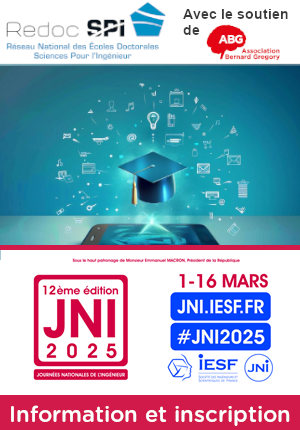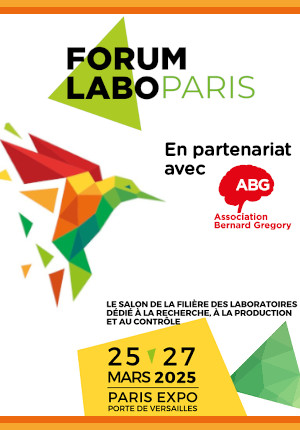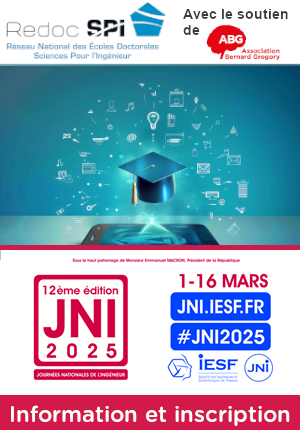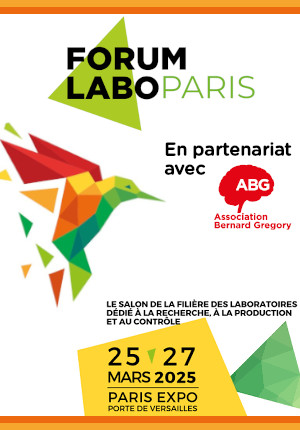Métamatériaux textiles pour la manipulation des ondes électromagnétiques // Textile metamaterials for electromagnetic wave manipulation
|
ABG-128421
ADUM-61393 |
Sujet de Thèse | |
| 08/02/2025 |
Université de Lille
Villeneuve d'Ascq - France
Métamatériaux textiles pour la manipulation des ondes électromagnétiques // Textile metamaterials for electromagnetic wave manipulation
- Informatique
Métamatériaux, Textile intelligent, Microondes, Ondes, Radar, Electromagnetisme
Metamaterials, Smart textile, Microwave, Wave, Radar, Electromagnetisms
Metamaterials, Smart textile, Microwave, Wave, Radar, Electromagnetisms
Description du sujet
L'objectif de la thèse est d'envisager la production de métamatériaux textiles non pas à l'échelle du tissage mais à l'échelle du fil et de la fibre constituant le textile. Il s'agit de considérer la géométrie de certains fils dits fantaisies qui font apparaitre naturellement des boucles qui peuvent être mises à profit pour obtenir des résonances électriques dans le textile et obtenir un comportement métamatériau. Deux types de fils fantaisies seront étudiés : les fils Knop et Loop pour lesquels les boucles seront formés par un fil conducteur autour d'un fil de cœur diélectrique. Un métamatériau textile serait alors fabriqué par tissage ou tricot des fils fantaisies. Le comportement électromagnétique des fils fantaisies sera étudié par la simulation pour des applications en redirection de faisceau, en réduction de surface équivalente radar (SER), ou d'absorption des ondes. Les paramètres géométriques des fils permettant d'obtenir une résonance autour de 60 GHz seront étudiés en prenant en compte les contraintes liées à la fabrication réelle de tels fils comme le diamètre ou la conductivité limitée des fils conducteurs utilisés usuellement pour les textiles. Des échantillons avec un nombre réduit de résonateurs seront fabriqués puis caractérisés expérimentalement afin de valider les résultats de simulation. Ces résultats expérimentaux préliminaires auront pour vocation de prouver la pertinence d'utiliser des fils fantaisies pour développer une nouvelle technologie de fabrication de métamatériaux textiles pour des applications de protection et de furtivité des personnes par des vêtements intelligents.
------------------------------------------------------------------------------------------------------------------------------------------------------------------------
------------------------------------------------------------------------------------------------------------------------------------------------------------------------
The thesis aims to consider the production of textile metamaterials not at the weaving scale but at the scale of the thread and fiber constituting the textile. It is a question of considering the geometry of certain so-called fancy yarns which naturally cause loops to appear which can be used to obtain electrical resonances in the textile and obtain metamaterial behavior. Two kinds of fancy yarns will be studied: Knop and Loop yarns for which the loops will be formed by a conductive yarn around a dielectric core wire. A textile metamaterial would then be manufactured by weaving or knitting fancy yarns. The electromagnetic behavior of fancy yarns will be studied by simulation for applications in beam redirection, radar cross section reduction (RCS), or wave absorption. The geometric parameters of the yarns allowing to obtain a resonance around 60 GHz will be studied by taking into account the constraints related to the real manufacturing of such yarns like the diameter or the limited conductivity of the conductive yarns usually used for textiles. Samples with a reduced number of resonators will be manufactured and then experimentally characterized in order to validate the simulation results. These preliminary experimental results will aim to prove the relevance of using fancy yarns to develop a new technology for manufacturing textile metamaterials for applications of protection and stealth of people by smart clothing.
------------------------------------------------------------------------------------------------------------------------------------------------------------------------
------------------------------------------------------------------------------------------------------------------------------------------------------------------------
Début de la thèse : 01/10/2025
------------------------------------------------------------------------------------------------------------------------------------------------------------------------
------------------------------------------------------------------------------------------------------------------------------------------------------------------------
The thesis aims to consider the production of textile metamaterials not at the weaving scale but at the scale of the thread and fiber constituting the textile. It is a question of considering the geometry of certain so-called fancy yarns which naturally cause loops to appear which can be used to obtain electrical resonances in the textile and obtain metamaterial behavior. Two kinds of fancy yarns will be studied: Knop and Loop yarns for which the loops will be formed by a conductive yarn around a dielectric core wire. A textile metamaterial would then be manufactured by weaving or knitting fancy yarns. The electromagnetic behavior of fancy yarns will be studied by simulation for applications in beam redirection, radar cross section reduction (RCS), or wave absorption. The geometric parameters of the yarns allowing to obtain a resonance around 60 GHz will be studied by taking into account the constraints related to the real manufacturing of such yarns like the diameter or the limited conductivity of the conductive yarns usually used for textiles. Samples with a reduced number of resonators will be manufactured and then experimentally characterized in order to validate the simulation results. These preliminary experimental results will aim to prove the relevance of using fancy yarns to develop a new technology for manufacturing textile metamaterials for applications of protection and stealth of people by smart clothing.
------------------------------------------------------------------------------------------------------------------------------------------------------------------------
------------------------------------------------------------------------------------------------------------------------------------------------------------------------
Début de la thèse : 01/10/2025
Nature du financement
Précisions sur le financement
Financement d'une collectivité locale ou territoriale
Présentation établissement et labo d'accueil
Université de Lille
Etablissement délivrant le doctorat
Université de Lille
Ecole doctorale
632 ENGSYS Sciences de l'ingénierie et des systèmes
Profil du candidat
Master 2 ou Ingénieur dans la spécialité électronique ou physique appliquée.
Connaissance de l'électromagnétisme et des microondes demandée.
Intérêt pour la théorie et l'expérience nécessaire.
Master's degree in Electronics or applied Physics. Knowledge in electromagnetisms and microwaves required. Interest for theory and experiments required.
Master's degree in Electronics or applied Physics. Knowledge in electromagnetisms and microwaves required. Interest for theory and experiments required.
21/04/2025
Postuler
Fermer
Vous avez déjà un compte ?
Nouvel utilisateur ?
Besoin d'informations sur l'ABG ?
Vous souhaitez recevoir nos infolettres ?
Découvrez nos adhérents
 PhDOOC
PhDOOC  TotalEnergies
TotalEnergies  Généthon
Généthon  Institut de Radioprotection et de Sureté Nucléaire - IRSN - Siège
Institut de Radioprotection et de Sureté Nucléaire - IRSN - Siège  MabDesign
MabDesign  ANRT
ANRT  ONERA - The French Aerospace Lab
ONERA - The French Aerospace Lab  SUEZ
SUEZ  Laboratoire National de Métrologie et d'Essais - LNE
Laboratoire National de Métrologie et d'Essais - LNE  MabDesign
MabDesign  Tecknowmetrix
Tecknowmetrix  CESI
CESI  CASDEN
CASDEN  ADEME
ADEME  Institut Sup'biotech de Paris
Institut Sup'biotech de Paris  Groupe AFNOR - Association française de normalisation
Groupe AFNOR - Association française de normalisation  Ifremer
Ifremer  Aérocentre, Pôle d'excellence régional
Aérocentre, Pôle d'excellence régional  Nokia Bell Labs France
Nokia Bell Labs France










